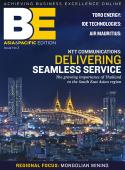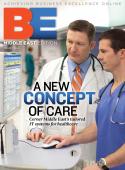Prepare for take-offWith increased passenger traffic comes the need for smart growth. Pensacola Regional Airport employs a multifaceted strategy to get the job done. Kate Sawyer gets onboard. Pensacola Regional Airport has something to smile about. It is the fastest growing airport between New Orleans and Jacksonville, Florida, with a reported 1.6 million passengers served in 2006. Since 2001, the Airport experienced a 53.5 percent boost in passenger growth, an increase not seen since the early 1990s. Frank Miller, present-day Airport Director, couldnÔÇÖt be more pleased. ÔÇ£With ten different airlines offering more than 50 flights a day to major hub cities, signs are good that PensacolaÔÇÖs robust passenger growth will continue,ÔÇØ he said.Miller oversees all operations at the Airport, from the physical expansion to staff administration. His previous positions, managing airports in Ohio and Alaska, have afforded him the breadth of experience necessary to understand the needs of a popular destination. In 2006, he was recognized by the Federal Aviation Administration (FAA) as the Air Carrier Airport Manager of the Year. ÔÇ£Frank Miller has been instrumental in the long-term success of the Pensacola Regional Airport. His tenure has been marked by sustained growth and excellence,ÔÇØ said Rusty Chapman, manager of the Airports Division, FAA Southern Region. ÔÇ£MillerÔÇÖs tireless leadership serves as an inspiration to aviation professionals throughout the nation.ÔÇØWith annual revenues of $100 million, Pensacola Regional Airport leverages its costs in part by keeping staff overhead low. It has only 62 full-time employees, and the rest of the Airport is serviced through contracted labor for landscaping, janitorial service, and parking facilities. Also, the Airport has an ongoing relationship with the Pensacola Police Department to offer retired policemen part-time security positions. It boasts an impressive array of airline superstars, including AirTran Airways, American Eagle, Continental Airlines, Continental Express, Delta Air Lines, Delta Connection, Northwest Airlink, US Airways, and US Airways Express. The Airport also has a healthy flow of cargo moving through. In 2006, for example, Pensacola Regional Airport saw more than 6.3 million pounds of cargo from carriers such as US Mail and DHL Express Packages carrying anything from seafood to manufacturing supplies. To sustain the arc of growth it has lately experienced, MillerÔÇÖs team at Pensacola Regional Airport has laid the groundwork for a substantial expansion and improvement project, which will undoubtedly attract additional airlines. One such initiative is the $27 million overhaul of the north/south runway.Passenger facility charges have helped to fund a $50 million terminal and ramp expansion, and construction is scheduled to begin in 2009. The renovated area will consist of a 90-foot ticket counter; an inline baggage screening facility; a concourse expansion for three to five additional terminal gates; and eleven to thirteen new jet bridges, which will offer better passenger service with lower maintenance costs. The new baggage screening facility is integral to the AirportÔÇÖs revamped security plan and will provide more efficient transporting of checked luggage. Further Airport improvements include doubling the size of the parking garage by 2011 and constructing a new car rental facility. Yet, all of this industry is a far cry from the AirportÔÇÖs humble beginnings as two grass airstrips and an old Navy hangar. In 1933, Connor Hagler and Harry Blanchard purchased 504 acres of thick woodland on SkinnerÔÇÖs Mill Road. By November 1938, regular commercial service began at the newly formed Pensacola Municipal Airport.From 1942 to 1945, the US Navy was granted war-time command of the airport. However, Pensacola was the only municipal airport operating on the coast between New Orleans and Tallahassee, Florida. During the time when the Navy controlled the airport, it swelled to 1,200 acres, two new runways were built, and the existing runways were enlarged to 5,000 feet.That growth has continued. In 1963, the FAA reported that the Pensacola area had the most dense air traffic in the US, including military flights, commercial carriers, and general aviation activity. Expansions throughout the next three decades saw the renovation of nearly every aspect of the airport, including its name change to Pensacola Regional Airport.┬á









